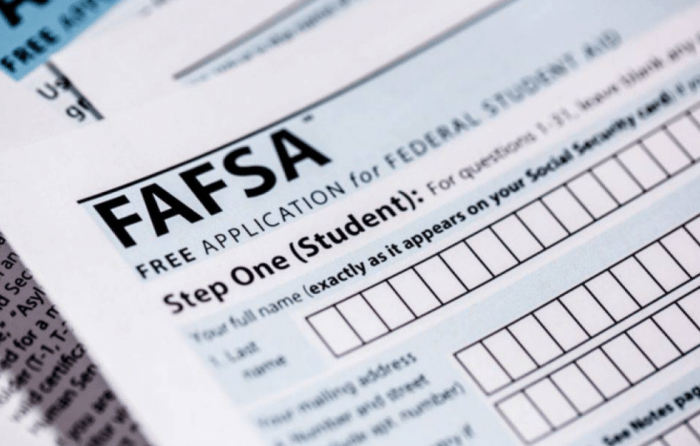
Securing financial aid for higher education can feel like navigating a complex maze. The Free Application for Federal Student Aid (FAFSA) is the key to unlocking various federal student loan programs and grants, significantly impacting college affordability. This guide serves as your roadmap, demystifying the FAFSA student loan application process and empowering you to make informed decisions about your financial future.
From understanding eligibility criteria and exploring different loan types to managing debt responsibly and avoiding common pitfalls, we will cover all aspects of the FAFSA application. We’ll also provide valuable resources and tips to help you navigate this crucial step towards achieving your educational goals.
FAFSA Application Process Overview

Completing the Free Application for Federal Student Aid (FAFSA) is a crucial step for students seeking financial aid for higher education. This process, while seemingly complex, can be managed efficiently with careful planning and attention to detail. Understanding the steps involved and the necessary documentation will streamline the application and increase the chances of receiving financial aid.
The FAFSA application is completed online through the official website, studentaid.gov. The process involves providing accurate personal and financial information, which is then used to determine your eligibility for federal student aid. This aid can include grants, loans, and work-study opportunities.
Required Documentation
Gathering the necessary documentation before starting the application is essential to ensure a smooth and efficient process. Having this information readily available will prevent delays and frustration. You will need your Social Security number, your federal tax returns (yours and your parents’, if you are a dependent student), and your driver’s license or state identification card. If you are a dependent student, you’ll also need your parents’ Social Security numbers and tax information. Finally, you will need your FSA ID, which is used to sign your FAFSA electronically.
Sections of the FAFSA Application and Their Purpose
The FAFSA application is organized into several sections, each requesting specific information. The Student Information section gathers details about the applicant, including their name, address, date of birth, and Social Security number. The School Information section requires details about the college or university you plan to attend, including the school’s federal school code. The Financial Information section is where you provide details about your income and assets, including tax information and bank account details. This information is used to calculate your Expected Family Contribution (EFC), which is a key factor in determining your eligibility for financial aid. Finally, the signature section requires electronic signatures from both the student and, if applicable, a parent.
Checklist of Actions Before, During, and After Submitting the Application
Careful planning before, during, and after submitting your FAFSA is vital for a successful application.
Before Submitting the Application
- Gather all necessary documentation, including tax returns, Social Security numbers, and driver’s license or state identification.
- Create an FSA ID for yourself and your parent(s), if applicable.
- Familiarize yourself with the FAFSA application and its sections.
- Review the IRS Data Retrieval Tool (DRT) to pre-fill your tax information directly from the IRS.
During the Application Process
- Double-check all information for accuracy before submitting.
- Use the IRS Data Retrieval Tool to accurately and efficiently input tax information.
- Save your progress regularly to prevent data loss.
After Submitting the Application
- Confirm that your FAFSA has been successfully submitted and received by the designated schools.
- Keep a copy of your FAFSA confirmation for your records.
- Monitor your student aid portal for updates on your financial aid award.
Ending Remarks

Successfully completing the FAFSA student loan application is a pivotal step towards accessing higher education. By understanding the process, eligibility requirements, and various loan options, you can make informed choices that align with your financial situation and long-term goals. Remember to utilize available resources, plan for responsible debt management, and don’t hesitate to seek assistance if needed. Your future success starts with a well-informed approach to financial aid.
FAQ Compilation
What happens if I make a mistake on my FAFSA application?
You can correct errors online through your FAFSA account. The sooner you identify and correct mistakes, the better. Contact your school’s financial aid office if you need assistance.
Can I appeal a financial aid decision?
Yes, most institutions allow appeals. You’ll need to provide compelling reasons for reconsideration, often involving significant changes in your financial circumstances.
What if I don’t qualify for federal student loans?
Explore alternative options like private student loans, scholarships, grants, and work-study programs. Your school’s financial aid office can provide guidance on these alternatives.
When should I start the FAFSA application process?
It’s recommended to begin the process as early as possible, ideally in the fall or early winter of your senior year of high school, or well in advance of the academic year you plan to attend.
How long does it take to process the FAFSA application?
Processing times vary, but it generally takes several weeks. You can track your application’s status online.
